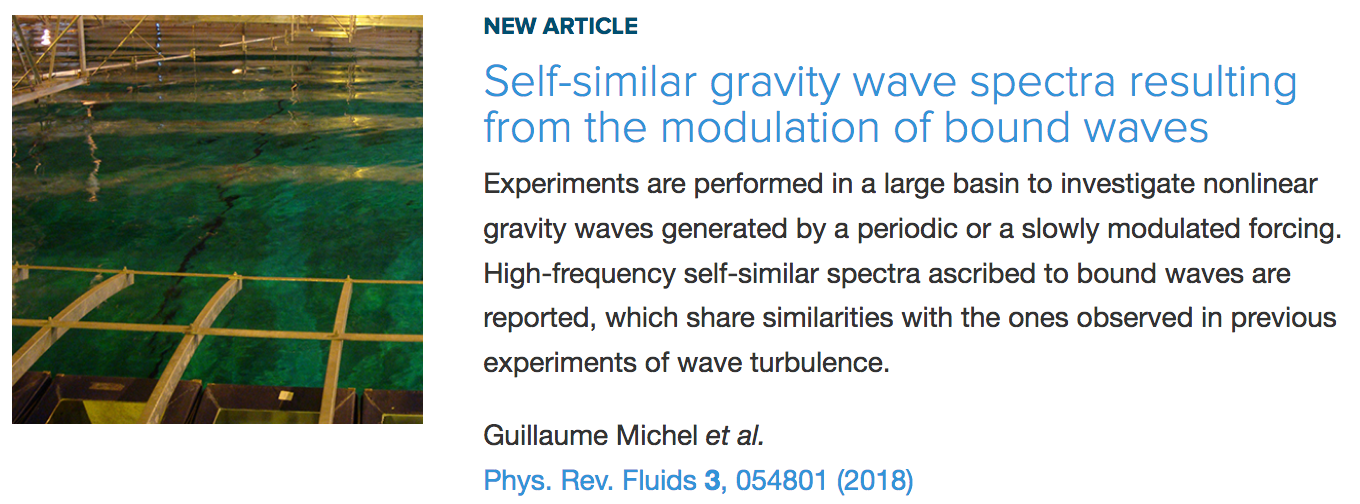URL: https://journals.aps.org/prfluids/abstract/10.1103/PhysRevFluids.3.054801
Abstract: We experimentally study the
properties of nonlinear surface gravity waves in a large scale
basin. We consider two different configurations: a
one-dimensional (1D) monochromatic wave forcing, and a
two-dimensional (2D) forcing with bichromatic waves satisfying
resonant-wave interaction conditions. For the 1D forcing, we
find a discrete wave energy spectrum dominated at high
frequencies by bound waves whose amplitudes decrease as a power
law of the frequency. Bound waves (e.g. to the carrier) are
harmonics superimposed on the carrier wave propagating with the
same phase velocity as the one of the carrier. When a narrow
frequency random modulation is applied to this carrier, the
high-frequency part of the wave energy spectrum becomes
continuous with the same frequency-power law. Similar results
are found for the 2D forcing when a random modulation is also
applied to both carrier waves. Our results thus show that all
these nonlinear gravity wave spectra are dominated at high
frequencies by the presence of bound waves, even in the
configuration where resonant interactions occur. Moreover, in
all these configurations, the power-law exponent of the spectrum
is found to depend on the forcing amplitude with the same trend
as the one found in previous gravity wave turbulence
experiments. Such set of bound waves may thus explain this
dependence that was previously poorly understood.
